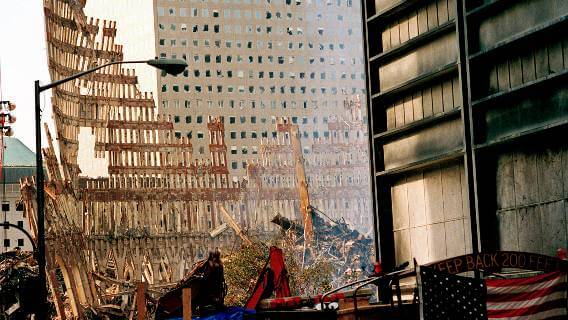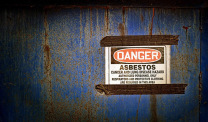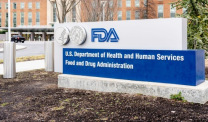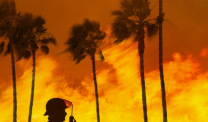9/11 Survivors: Worries Still Linger
Asbestos Exposure & BansWritten by Tim Povtak | Edited By Walter Pacheco

George Rolon left his job in New York City and moved to Florida less than a month after narrowly surviving the 9/11 terrorist attacks on the World Trade Center, hoping to escape his recurring nightmares and start anew.
It was not that easy. Too many good friends had died, and too many visions of horror remained from Sept. 11. The toxic, asbestos-laden dust cloud that engulfed him and everyone else in lower Manhattan still lingers in his mind — and possibly in his lungs — today.
It’s an uncertain future he and many others are forced to live with.
All of America commemorates the 12th anniversary of 9/11 today to honor the nearly 3,000 people who died, but little will be said about those like Rolon who survived to ponder an uncertain, uneasy future, caused by the 2,000 tons of pulverized asbestos floating in the air for weeks.
The inhalation of microscopic asbestos fibers can cause a variety of serious health issues, including mesothelioma, a deadly cancer that develops decades after exposure.
While one recent study of 9/11 first responders revealed a 19 percent increase in other cancers, the impact of mesothelioma and asbestos-related lung cancer won’t be felt until decades from now.
“You can’t really connect mesothelioma directly yet with 9/11 because of the long lag time that will be involved,” Raja Flores, M.D., chief of thoracic surgery at New York’s Mount Sinai Hospital, told Asbestos.com. “In 20 years, though, you’ll see a bump up (in the numbers). It’s common sense. Asbestos causes cancer. We’ve already been seeing it.”
No amount of asbestos exposure is safe. And while the majority of mesothelioma cases in America usually come after lengthy occupational exposure, many experts believe that exposure to such a high concentration of asbestos on 9/11 — even for one day — will cause some serious, long-range health problems for many who were there.
Victim Faces Uncertain Future
Rolon, 50, was working as a senior clerk for a major brokerage firm on the fifth floor of the second tower to be hit. Many of his friends on the upper floors didn’t get out. He scrambled, like everyone else, to get as far away as quickly as he could, covered in toxic dust and struggling to find clean air.
When he finally reached his home in Jersey City — about eight hours later — he was put through a detox center, where he was hosed down under a tent and given new clothes.
“It was just something you never forget,” he told Asbestos.com. “Many times, I’d wake up in the middle of the night in cold sweat, or wake up crying. I needed therapy. For a long time, I was scared to go into elevators or tall buildings.”
Rolon, who was single then, moved in early October 2001 to Central Florida, where his parents lived. In the years since, he married and started a family, which has helped soften some of his memories from 9/11.
“It’s always in the back of your mind — What is down the road for you? — especially when you go in for a physical each year, or you have any kind of breathing issue,” Rolon said. “It’s something that never really goes away.”

Connect with a mesothelioma specialist who can help you or a loved one diagnose an asbestos-related illness.
Get Help NowFuture Risk Is Real
“It’s difficult to know the absolute risk for each person, but I would expect a rash of mesothelioma and lung cancer cases to begin 20 years after 9/11, and to peak about 40 years after 9/11,” said Craig Stevens, M.D., Ph.D., mesothelioma specialist at the Moffitt Cancer Center in Tampa. “It is a looming health problem that is underestimated right now by the general public.”
Since 9/11, researchers at Mount Sinai have been following approximately 30,000 first responders, including firefighters, police officers, paramedics and those who were part of the early cleanup efforts. They found that 30 percent had problems with asthma, 40 percent with sinus issues and 40 percent with gastroesophageal reflux, a common predictor of esophageal cancer.
And while many of those who worked near ground zero were equipped with protective clothing and respiratory gear, hundreds of thousands of Manhattan residents returned to their everyday routine under the same dust cloud.
And those like Rolon who were running for their lives that day as the twin towers collapsed, covered in dust and gasping for breath, they still wonder what may eventually happen to them.
Everyone There Is at Risk
Nora Jean Quinn, who was working across Manhattan that day for a global management company, didn’t feel threatened by asbestos exposure on 9/11, but put herself into danger during the next couple months as a Red Cross volunteer.
“I never even thought about any danger from the haze and dust and the burning debris,” said Quinn, who lives now in Texas. “I just wanted to go help fellow New Yorkers in trouble. Seeing those people come running, looking like they’d been rolled in a vat of flour, thick with a white and gray dust, with absolutely dazed expressions, it was something you don’t forget.”
Quinn later joined the Army and spent almost a year in Afghanistan, working close to the open air Burn Pits, where the smoke from the solid waste attracted considerable attention from environmentalists. It made her rethink what she had done to help in New York City.
“All that asbestos material burning in New York, and I was right there,” she told Asbestos.com. “You have to wonder now what kind of long-term effect it will have on you. It wasn’t until after I left New York that I started thinking, ‘What have I done?’ I try not to think too much about it now.”
Covered in Asbestos Cement
Eddie Watson, who lives on the east coast of Florida, was in Manhattan on business that day, just a few blocks away when the twin towers were hit, leaving him covered with debris and running for his life.
“You had to put your shirt over your head to breath,” he told Asbestos.com. “The cement pieces just covered us like rain. It was all over your face, your chest, your hair. The plaster just turned into dust and came rolling down the street and covered us like a tidal wave.”
Watson, 79, who is retired, said he and the others he was with that day have not suffered any respiratory issues, but there’s no guarantee for the future.
“We had to cover our faces to breathe,” he said. “We have a prayer group that meets every year and prays for the families involved. I don’t know if I’ll ever go back to New York again, but I will never, ever forget that day.”
The deadline to register as a potential claimant with the 9/11 Victims Compensation Fund (VCF) is Oct. 3, 2013. If you were injured by exposure to asbestos or other toxic materials at a 9/11 crash site, visit the VCF’s website as soon as possible for more information about registering. You may also contact the VCF at (855) 885-1555.






